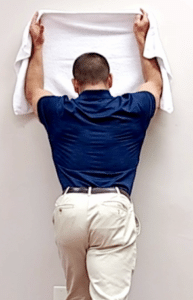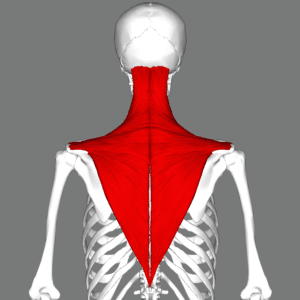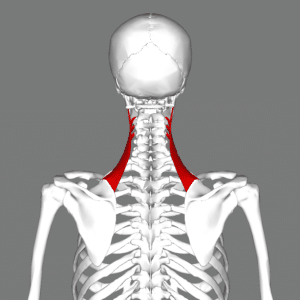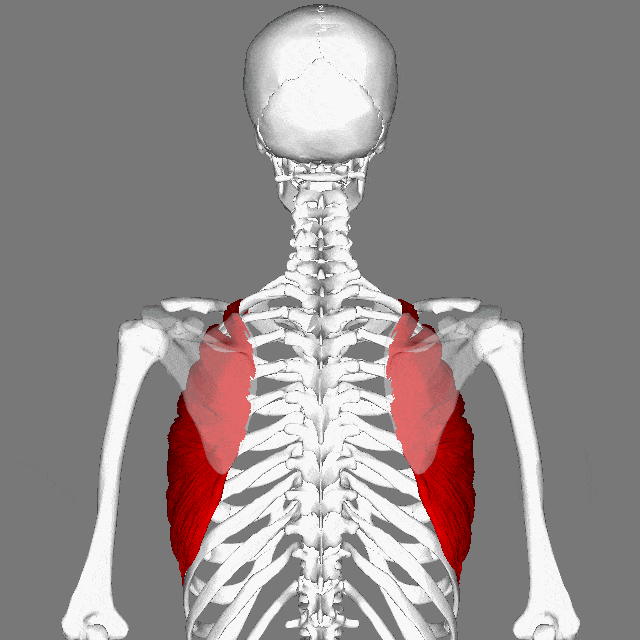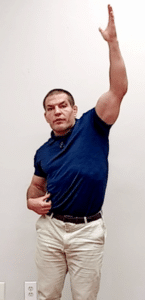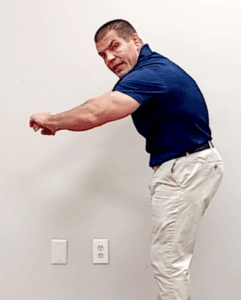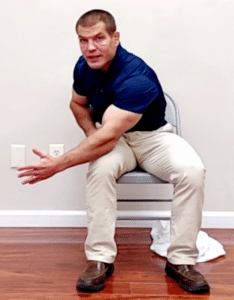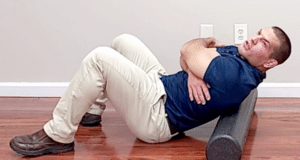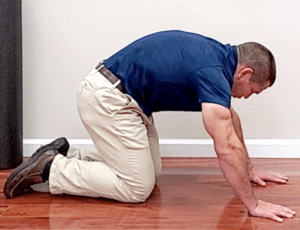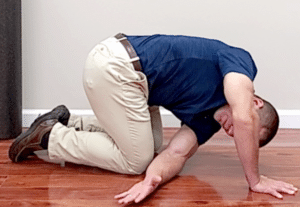Looking For Stretches For Upper Back?
If you have nagging upper back pain that won't go away, try the 7 upper back pain stretches in this video.
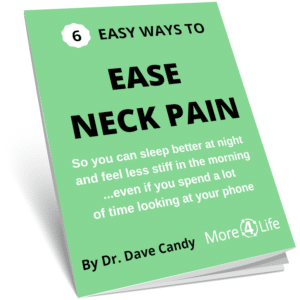
Reasons For Upper Back Pain
There are a lot of different reasons that you may have upper back pain. However, rather than bore you with all of them at once, I’m going to jump right into the stretches.
Then I’ll explain along the way what type of upper back pain each stretch is good for.
Upper Back Pain Stretch 1: Wall Slides
The first stretch is wall slides. To do this, you face toward a wall and put both forearms on the wall.
It helps to use a towel to reduce friction and prevent marks on your walls.
Push pressure into the wall with your forearms. Then slide your arms up the wall.
Hold for 10 seconds. Then slide back down and repeat 10 times.
Who is this upper back pain stretch good for?
This stretch is good for people who have upper back pain due to a depressed shoulder blade on one or both sides.
You can notice this if one shoulder seems to be lower than the other, or if you have a downward slope of one or both shoulder blades.
The shoulder blades should normally rest between the second and seventh thoracic vertebrae.
When the shoulder blade is lower than that, it pulls tension on the muscles that suspend your shoulder and arm from the neck.
Specifically, those muscles are the upper trapezius and levator scapula as shown below.
This in turn can create compression on the neck and pinch nerves in the neck.
Pinched nerves in the lower neck are in fact one of the leading causes of upper back pain.
So by sliding your arms up the wall, you relieve pressure off of the neck.
Additionally, the C5, C6, and C7 nerve roots from your neck make up the long thoracic nerve that runs down your upper back under the shoulder blade.
When your shoulder blade is hanging too low, it pulls tension on the long thoracic nerve.
That nerve innervates the serratus anterior, a muscle that runs from your rib cage underneath your shoulder blade.
The serratus anterior can also refer pain into the upper back under the shoulder blade.
And interestingly, the wall slide exercise actually helps strengthen the serratus anterior.
It also helps stretch the rhomboids - the muscles between the shoulder blades and spine.
So for all of those reasons, if one or both of your shoulders hang down low, the wall slide is one of the best stretches.
Upper Back Pain Stretch 2: One Arm Overhead Stretch
The second exercise is similar to the first one. However, this exercise focuses more on one side at a time.
To do this exercise, you put one hand in the air over your head. Reach as high as you can with it, and lean toward the opposite side.
Hold 10 seconds and repeat.
This exercise is primarily for someone who has a low shoulder blade on one side.
You’ll want to raise the arm on the side of the low shoulder in the air when doing this exercise.
Upper Back Pain Stretch 3: Thoracic Flexion Stretch
The next stretch is a thoracic flexion stretch.
Many therapists who teach upper back pain stretches focus on strengthening the upper back muscles to prevent forward head, rounded shoulder posture.
However, often TOO much focus is put on maintaining perfectly upright posture, and as a result, you can develop a straight upper back.
However, there should be some curve in your upper back.
So this exercise is good for someone who has a flat upper back and/or shoulder blades that don’t round forwards at all.
One way to do this is just to reach your arms forward and round your upper back.
Another options is to grab onto a study piece of furniture such as a closed door, or a piece of heavy gym equipment. Then just lean back until you feel a stretch in your upper back muscles.
This helps stretch out your rhomboid muscles between your shoulder blades and spine which are a common source of lower back pain.
It also helps restore the normal rounding, or kyphosis, of the thoracic spine in people who have lost it. Having too little kyphosis can put you at risk for pinching a nerve in the upper back.
Upper Back Pain Stretch 4 - Seated Thoracic Rotation
The next exercise is to improve rotation, or twisting, of your thoracic spine.
Rotation is one of the most important movements of the thoracic spine because your lower back wasn’t designed to twist.
Therefore, most of your trunk rotation needs to come from your upper back.
To help improve your thoracic rotation, sit in a chair with your feet flat on the floor.
Next, reach one arm toward your opposite knee, thinking about touching your elbow to your knee.
If you can’t reach that far, just get as close as you can.
Hold 5 seconds, then stretch to the opposite side. Repeat 5 times each side.
Upper Back Pain Stretch 5 - Foam Rolling
The next exercise is foam rolling. This is more of a “feels good” exercise than a corrective exercise, so just about anyone can do it if you can get up and down from the floor.
To do the exercise, place a foam roller on the ground and then position your body perpendicular to it.
Cross your arms across your chest or clasp your hands behind your head.
This will help get your shoulder blades out of the way.
Then roll back and forth on the foam roller to massage your upper back muscles.
You may also hear or feel a few pops in your upper back, which often feels good.
Do this for about 1 minute.
Upper Back Pain Stretch 6 - Serratus Anterior in Quadruped
While you’re on the ground, I’m going to show you a few other upper back pain stretches that you can do here.
If you can’t get up and down from the ground though, you can just as easily do these next two stretches kneeling on a bed, which may also be more comfortable on your knees.
The stretch combines the benefits of both the wall a slide and the thoracic flexion exercises that I showed earlier.
To do the exercise, kneel on all fours and push into the ground with your hands such that it pushes your upper back away from the ground.
This activates your serratus anterior muscle, stretches your rhomboids, and rounds your thoracic spine.
Hold that position for 10 seconds and then return to the starting position. Repeat 5-10 times.
This stretch is sometime referred to as the “angry cat” because it looks like a cat arching its back.
It’s also part of the exercises known as “cat-camel” or “cat-cow”, but for this particular exercise, just do the cat portion where you lift your upper back up. Don’t worry about the camel or cow part where your arch your back down.
Upper Back Pain Stretch 7 - Thoracic Rotation in Quadruped
The final upper back pain stretch that I’ll show is another thoracic rotation exercise.
This one is very much like the seated one that I showed earlier, except that it’s in a kneeling position.
To do this stretch, slide one arm underneath your body reaching your elbow toward your opposite knee.
Hold that position for 10 seconds, then repeat with the other arm.
This helps increase your thoracic rotation mobility which is especially important if you play sports like golf, tennis, or pickleball.
It’s also important because trunk rotation is an important part of walking to allow you to swing your arms back and forth.
People with Parkinson’s diseases or a Parkinson’s like gait pattern tend to lose this trunk rotation and walk very stiff.
So it’s important to maintain your trunk rotation whether or not you play sports.
Is there a benefit to doing the kneeling vs. seated upper back rotation stretch?
Realistically, there’s not a huge difference.
On one hand, your spine is in a loaded position in the seated version vs. an unloaded position in the kneeling version.
But it’s also much more convenient to do a stretch where you don’t have to kneel on the bed or the floor.
So you can do one, the other, or both. Try them both out and see which one works best for you.
In fact, try all of these stretches and see which ones best relieve your upper back pain.
For most people, there are 1 or 2 stretches that really seem to help most depending on the type of upper back pain that they have.
So just do the ones that work best for you and don't waste your time on the other ones.
How To Get Lasting Relief From Upper Back Pain
While stretching is good, ultimately, you do need to figure out the root cause of the pain in order to keep it from coming back.
The postural tips in this post are a good start.
However, if you need more help to determine the root cause of your upper back pain and how to fix it for good, we'd be happy to help you at More 4 Life.
Just tap the button below to request an appointment with one of our specialist physical therapists.
Like this post? Here are some others you may enjoy:
Have A Knot In The Shoulder Blade That Won't Go Away?
8 Neck Pain Exercises To Help You Get Relief At Home
Chair Yoga Seniors Can Do For Neck Pain and Back Pain In 7 Easy Poses



